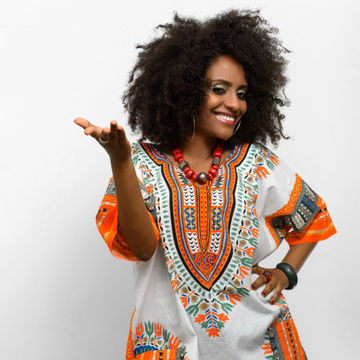
African apparel generally alludes to the customary attire worn by individuals of Africa. Various clans all through the mainland highly esteem their public dress which they use for services and exceptional events. There are many fluctuated styles of dress and the kind of material assumes a fundamental part in forming the article of clothing. The texture frequently mirrors the general public overall as well as the situation with people or gatherings inside that local area.
In certain occurrences, customary robes have been supplanted or affected by unfamiliar societies, similar to the pilgrim effect or well-known Western clothing regulation. The advancement of dress in Africa is undeniably challenging because of the absence of composing words and genuine, authentic proof. A lot is sorted out from different sources like traditional robes being given over to introduce day ancestral individuals, verbal (oral history), theater (disguises), and artistry and curios, which show sculptural portrayals of the dress.
History Of Clothing In Africa
Clothing was not commonly required for warmth or assurance in many regions of the African mainland because of the warm and neighborly environment, and numerous clans didn't wear much by any stretch of the imagination. The men wore only an undergarment or cover, and the ladies wore folds over their abdomen or bosoms, frequently embellishing their other bodies with scarification and paint ochres.
Bark fabric, furs, skins, and stows away were, for the most part, utilized for these first types of dress.
Guys folded the bark material around a belt and passed between the legs while ladies hung the fabric over the belt to conceal the front of their bodies.
Raffia was used to sew together separate bits of bark fabric and be used for grass skirts.
Stone age man forward made bark material by stripping bark from trees and beating it with a stone until flimsy and pliant. Little pieces would be sewn along with stow away or raffia to make bigger parts to cover the body. Some of the time, it was improved with designs leading to the custom of adornment that exists in pretty much every African country.
The Redefined Clothes
Decoration of apparel stopped via molding gems and headgear from shells, bones, ostrich eggshell pieces, and plumes.
The earliest proof of material production showed up at Igbo-Ukwu and comprised of uncovered parts of unpatterned, bast-fiber fabric dating from the ninth century. (Bast is the plant fiber produced using the phloem, the inner bark). Mali's revelation of the Tellem collapses uncovered eleventh and twelfth Century funerary destinations, which revealed parts of cotton and fleece texture colored with indigo.
And afterward, around the fifteenth century, the exchange happened in Africa, with transportation courses being opened up between Europe, Africa, and the East. Fascinating things showed up on the landmass and started to be desired by the neighborhood occupants to enhance their nearby material. Dots, shells, and fastens started to show up on articles of clothing, either as adornment or making up the whole article of clothing like beaded covers, capes, headbands, and shoes.
Different winding around methods was created in various regions, some more moderate than others. Filaments utilized were cotton, raffia, silk, and fleece. Woven and enhanced materials used for African dress turned into an impression of the clan's status, financial standing, way of life, current circumstance, and environment.
African Clothes Today
Traditional and contemporary woven and printed textures wrapped or hung around the body shape the core of traditional dress—enhancement of the body with hats, packs, belts, chokers, and supports. Furthermore, capes produced using dots, feathers, calfskin, gold and silver, shells, ostrich eggshell, ivory, buttons, fur, skins, bone, creature tails and hair, raffia, wood, grass, ringers, and squeezed metal all add to a rich and decorated outfit utilized for ancestral purposes.



